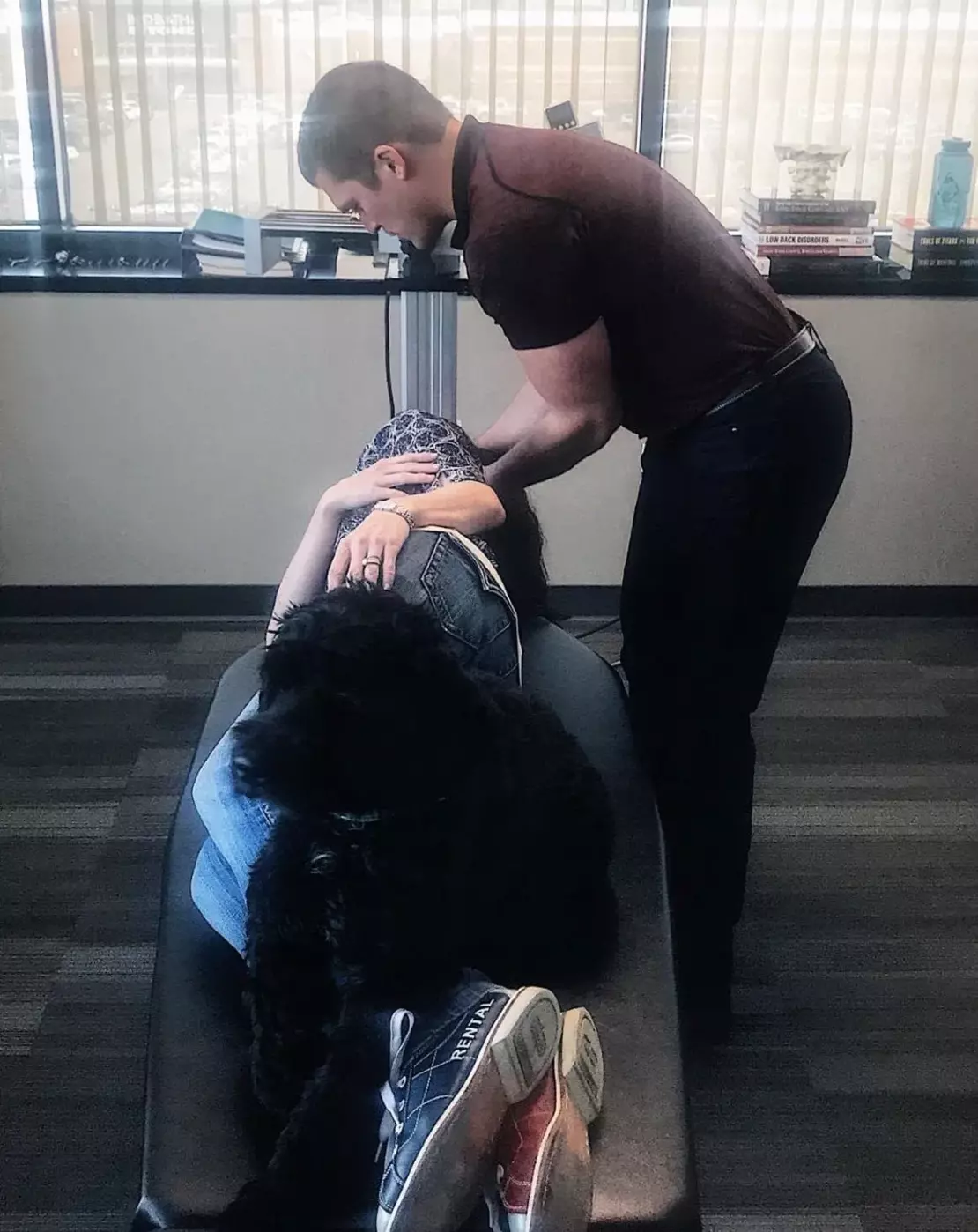- info@denveruppercervical.com
- 303-955-8270
What Causes Body Aches? Remedies & Red Flags
Exploring the Unique Causes of Headaches in Denver and How Chiropractic Care Provides Relief
Whether we sit around all day, or we work our fingers to the bone, our bodies ache.
Especially when a global pandemic forces most of us to spend hours and hours sitting around the house, it is important to understand how body aches are triggered and how to remedy them.
Body aches are when parts of your body experience a continuous dull pain. Though body aches vary in intensity and frequency , they are very common. But just because they are common doesn’t mean you have to live with them.
Aching can be caused by several various factors, such as tiredness, stress, a cold, or even a vitamin deficiency.
Below, you will learn about remedies for body aches, as well as when you should seek help.
Causes of Body Aches
So many factors can cause your body to ache.
You might ask, “Does lack of activity make my body ache?” Yes, sitting for a long time, working for a long time, the flu — a lot of triggers can make your body ache:
- Sitting, or standing in the same position for a long period of time
- Poor posture
- Prolonged physical labor
- Chronic fatigue syndrome
- Lack of sleep
- Stress
- Dehydration
- Flu (influenza)
- Common cold
- Pneumonia
- Mononucleosis (also called “mono” or “the kissing disease”)
- Other bacterial and viral infections
- Lyme disease (infection from a tick bite)
- Fluid retention (which can be caused by congestive heart failure, hypothyroidism, etc.)
- Vitamin D deficiency (AKA hypocalcemia)
- Arthritis
- Anemia
- Hypokalemia
- Fibromyalgia
- Lupus
- Multiple sclerosis (also known as MS)
- Myositis
- Withdrawal from drugs or alcohol
- Certain medications (for example, blood pressure meds or statins)
Remedies for Ongoing Body Aches
There are ways to alleviate the common symptoms of body aches, and there are ways to address the underlying causes. Although we suggest addressing these root causes , you may also want immediate relief from muscle aches and joint pain.
Rest & Relaxation
Fight Dehydration
Chiropractic Care
Over-the-Counter Medications
All Natural Pain Relievers
Rest is a wonderful thing. Your body needs time to repair and recuperate. Putting your legs up and unwinding from a stressful day can prevent or alleviate body aches.
Sleep can take it a step further. Getting a full night’s sleep (seven to eight hours a night) has been linked to less pain throughout the body. If you’re having trouble sleeping, try taking a warm shower or drinking hot tea an hour before bedtime.
Cutting out blue light emissions is one way to get high-quality sleep. Technology like your phone and television emit blue light, which tricks your brain into thinking the sun is still up. Turn off technology an hour before bedtime, so your mind can naturally want to fall asleep.
Stress relief should reduce your anxiety and reduce your risk for body aches — not to mention a lot of other medical conditions. Prolonged stress weakens your immune system and has been linked to a lot of nasty diseases.
Relaxation techniques include:
- Meditation
- Yoga
- Acupuncture
- Massage
- Having a warm bath
- Enjoying the outdoors
- Spending less time on social media
- Share your feelings of stress with someone you trust, like a friend or therapist
Drink plenty of fluids . Dehydration can cause headaches and muscle weakness. Prevent these aches by staying hydrated.
Other symptoms of dehydration to look out for include:
- Dark urine
- Exhaustion
- Disorientation
- Dry mouth or tongue
- Extreme thirst


Chiropractic care can help you when you’re feeling achy. Chiropractic adjustments have been shown to reduce neck pain and low back pain. Regular visits ensure that your skeletal base is providing balanced support to each segment of your body.
Not only does chiropractic manipulation help cure acute and chronic pain, it has been shown to alleviate headaches and boost your immune system’s communication.
If you live in the greater Denver area, click here to request an appointment at Denver Upper Cervical Chiropractic. For your
convenience, we reserve Fridays for out-of-town patients.
Non-steroidal anti-inflammatory drugs (NSAIDs), like ibuprofen or naproxen or aspirin, are known to reduce pain and inflammation. They treat the symptoms and not the causes, but can be an effective way to relieve short-term pain.
However, many avoid overuse of NSAIDs due to their side effects.
Acetaminophen (Tylenol) is another over-the-counter medication you can take for pain relief. For some, acetaminophen is a great way to reduce flu symptoms.
- Ginger is well-known for its ability to reduce swelling, inflammation, and general pain. This makes it the perfect all-natural pain reliever that you can find in a dietary supplement or on your spice rack.
- Curcumin is the primary component in turmeric. Curcumin has been shown to reduce aches and pains. Studies show that curcumin is antioxidant, antimicrobial, anti-inflammatory, and even anti-cancer. Though the bioavailability of curcumin from the spice turmeric is low, you can find curcumin in dietary supplement form.
- Lavender is a known natural pain reliever. Lavender oil and lavender aromatherapy are both research-backed methods of getting rid of body aches.
- Rosemary essential oil is a common analgesic, which means it relieves pain. Rosemary essential oil can help you say goodbye to body aches.
- Peppermint is a commonly used pain therapy. Whether via essential oil or via aromatherapy, peppermint has been used to alleviate abdominal pain, shoulder pain, and general aching.
- Cloves are another popular all-natural pain reliever. Clove oil contains eugenol, which is an anti-inflammatory agent. A lot of pain comes from inflammation, so reducing inflammation can lead to less body aches.
- Feverfew is the name given to a flower by the scientific name Tanacetum parthenium. It “behaves as a potent pain reliever ” in all sorts of cases. Inflammatory pain, neuropathic pain, acute pain — feverfew seems to relieve all kinds of aching.
Always consult your healthcare provider before starting any new dietary supplement. Some may interact poorly with synthetic drugs you may be taking.

When It’s Time to Call Your Doctor
“How do I know when a body ache is serious?” You know when a body ache is serious when it is accompanied by warning signs that indicate a dangerous root cause.
Seek immediate medical attention if you experience any of these symptoms alongside body aches:
- Difficulty breathing
- Trouble eating or drinking
- A cough that won’t go away
- Fainting
- Seizures
- Blindness
- Memory loss
- Chest pain
- Extreme exhaustion
If your milder symptoms persist for a couple weeks, you will also want to contact your healthcare provider.
Otherwise, body aches are a problem you can take care of at home.
Recovering from Body Aches after COVID-19
Whenever an unprecedented global pandemic forces millions of people to remain at their house, millions of people are going to feel body aches.
According to the United States Centers for Disease Control and Prevention (CDC), if you contract COVID-19 (also called the coronavirus) you may experience these coronavirus symptoms :
- Fever
- Dry cough, which can cause sore throat
- Shortness of breath
- Muscle pain or weakness (AKA body aches)
If you are over 60 years old or have a pre-existing condition, coronavirus can be dangerous. The World Health Organization suggests the following self-care for coronavirus patients:
- Rest
- Sleep
- Keep warm
- Drink plenty of fluids
- Keep your environment humid
If you don’t have COVID-19, but are staying at home like millions of others, you’re still at risk of body aches .
When you sit for a long period of time, your muscles get stiff and weak. This causes bad posture, which leads to neck and back pain.
Never fear, there are some easy solutions to preventing body aches while you’re at home.
- Stretching, preferably when you wake up and whenever you feel an ache coming on
- Changing positions, maintaining good posture
- Changing seats
- Getting a good amount of sleep — not too little, but not too much
- Exercise regularly ; don’t sit around all day
- Get some fresh air and take a walk outside — take your dog if you have one
The most important thing is to not stop moving . Regular motion promotes healthy spine and brain aging. And it prevents you having to visit your doctor as often.
Looking to the Future
This pandemic will pass. But body ache triggers will remain.
Always be careful to maintain good posture, get a good night’s sleep, and don’t get too stressed.
If you want to prevent body aches, chiropractic care is a great way to do that. At Denver Upper Cervical Chiropractic, we empower patients to live ache-free. Click here to learn about becoming a new patient.
Sources:
- Roizenblatt, M., Rosa Neto, N. S., Tufik, S., & Roizenblatt, S. (2012). Pain-related diseases and sleep disorders. Brazilian journal of medical and biological research , 45 (9), 792-798. Full text: https://www.ncbi.nlm.nih.gov/pmc/articles/PMC3854323/
- Tosini, G., Ferguson, I., & Tsubota, K. (2016). Effects of blue light on the circadian system and eye physiology. Molecular vision , 22 , 61. Full text: https://www.ncbi.nlm.nih.gov/pmc/articles/PMC4734149/
- Sharma, H. (2015). Meditation: process and effects. Ayu , 36 (3), 233. Full text: https://www.ncbi.nlm.nih.gov/pmc/articles/PMC4895748/
- Kondo, M. C., Jacoby, S. F., & South, E. C. (2018). Does spending time outdoors reduce stress? A review of real-time stress response to outdoor environments. Health & place , 51 , 136-150. Full text: https://www.fs.fed.us/nrs/pubs/jrnl/2018/nrs_2018_kondo_004.pdf
- Shaheen, N. A., Alqahtani, A. A., Assiri, H., Alkhodair, R., & Hussein, M. A. (2018). Public knowledge of dehydration and fluid intake practices: variation by participants’ characteristics. BMC public health , 18 (1), 1346. Full text: https://www.ncbi.nlm.nih.gov/pmc/articles/PMC6282244/
- Salehi, A., Hashemi, N., Imanieh, M. H., & Saber, M. (2015). Chiropractic: is it efficient in treatment of diseases? Review of systematic reviews. International journal of community based nursing and midwifery , 3 (4), 244. Full text: https://www.ncbi.nlm.nih.gov/pmc/articles/PMC4591574/
- Lawrence, D. J., Meeker, W., Branson, R., Bronfort, G., Cates, J. R., Haas, M., … & Triano, J. J. (2008). Chiropractic management of low back pain and low back-related leg complaints: a literature synthesis. Journal of manipulative and physiological therapeutics , 31 (9), 659-674. Full text: https://www.jmptonline.org/article/S0161-4754%2808%2900277-7/fulltext
- Bronfort, G., Assendelft, W. J., Evans, R., Haas, M., & Bouter, L. (2001). Efficacy of spinal manipulation for chronic headache: a systematic review. Journal of manipulative and physiological therapeutics , 24 (7), 457-466. Abstract: https://www.sciencedirect.com/science/article/abs/pii/S0161475401994230
- Wongrakpanich, S., Wongrakpanich, A., Melhado, K., & Rangaswami, J. (2018). A comprehensive review of non-steroidal anti-inflammatory drug use in the elderly. Aging and disease , 9 (1), 143. Full text: https://www.ncbi.nlm.nih.gov/pmc/articles/PMC5772852/
- Bode, A. M., & Dong, Z. (2011). The amazing and mighty ginger. Herbal medicine: Biomolecular and clinical aspects , 2. Full text: https://www.ncbi.nlm.nih.gov/books/NBK92775/
- Hewlings, S. J., & Kalman, D. S. (2017). Curcumin: a review of its’ effects on human health. Foods , 6 (10), 92. Full text: https://www.ncbi.nlm.nih.gov/pmc/articles/PMC5664031/
- Nikjou, R., Kazemzadeh, R., Rostamnegad, M., Moshfegi, S., Karimollahi, M., & Salehi, H. (2016). The effect of lavender aromatherapy on the pain severity of primary dysmenorrhea: A triple-blind randomized clinical trial. Annals of medical and health sciences research , 6 (4), 211-215. Full text: https://www.ncbi.nlm.nih.gov/pmc/articles/PMC5405632/
- Raskovic, A., Milanovic, I., Pavlovic, N., Milijasevic, B., Ubavic, M., & Mikov, M. (2015). Analgesic effects of rosemary essential oil and its interactions with codeine and paracetamol in mice. Eur Rev Med Pharmacol Sci , 19 (1), 165-172. Full text: https://www.researchgate.net/profile/Nebojsa_Pavlovic/publication/271591611_Analgesic_effects_of_rosemary_essential_oil_and_its_interactions_with_codeine_and_paracetamol_in_mice/
- Lakhan, S. E., Sheafer, H., & Tepper, D. (2016). The effectiveness of aromatherapy in reducing pain: a systematic review and meta-analysis. Pain research and treatment , 2016. Full text: https://www.ncbi.nlm.nih.gov/pmc/articles/PMC5192342/
- Barboza, J. N., da Silva Maia Bezerra Filho, C., Silva, R. O., Medeiros, J. V. R., & de Sousa, D. P. (2018). An Overview on the Anti-inflammatory Potential and Antioxidant Profile of Eugenol. Oxidative medicine and cellular longevity , 2018. Full text: https://www.ncbi.nlm.nih.gov/pmc/articles/PMC6217746/
- Mannelli, L. D. C., Tenci, B., Zanardelli, M., Maidecchi, A., Lugli, A., Mattoli, L., & Ghelardini, C. (2015). Widespread pain reliever profile of a flower extract of Tanacetum parthenium. Phytomedicine , 22 (7-8), 752-758. Abstract: https://www.ncbi.nlm.nih.gov/pubmed/26141762
- Brito, R. G., Rasmussen, L. A., & Sluka, K. A. (2017). Regular physical activity prevents development of chronic muscle pain through modulation of supraspinal opioid and serotonergic mechanisms. Pain reports , 2 (5). Full text: https://www.ncbi.nlm.nih.gov/pmc/articles/PMC5777681/
The post What Causes Body Aches? Remedies & Red Flags appeared first on Denver Upper Cervical Chiropractic.
© 2025 Denver Upper Cervical Chiropractic

